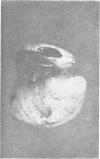Abstract
Six cases of ocular lymphocystis, a virus disease, are described. Lymphocystis is generally known as a benigh, unique, giant cell disease of fishes causing nodules on the skin and fins. It has been studied extensively because of the virus-host cell relationship that results in extreme size and lack of quick cellular destruction or stimulation to neoplasia. Lymphocystis cells were found behind or in one or both eyes and were also found on the cornea or adjacent skin surfaces. A retrobulbar mass produced extreme exophthalmos. Uveal (choroid and iris) masses were present in most cases. Optic nerve involvement was also seen. It is probable that the virus reached the eye by the blood with the resulting masses forming in situ rather than by direct extension from skin lesions.
Full text
PDF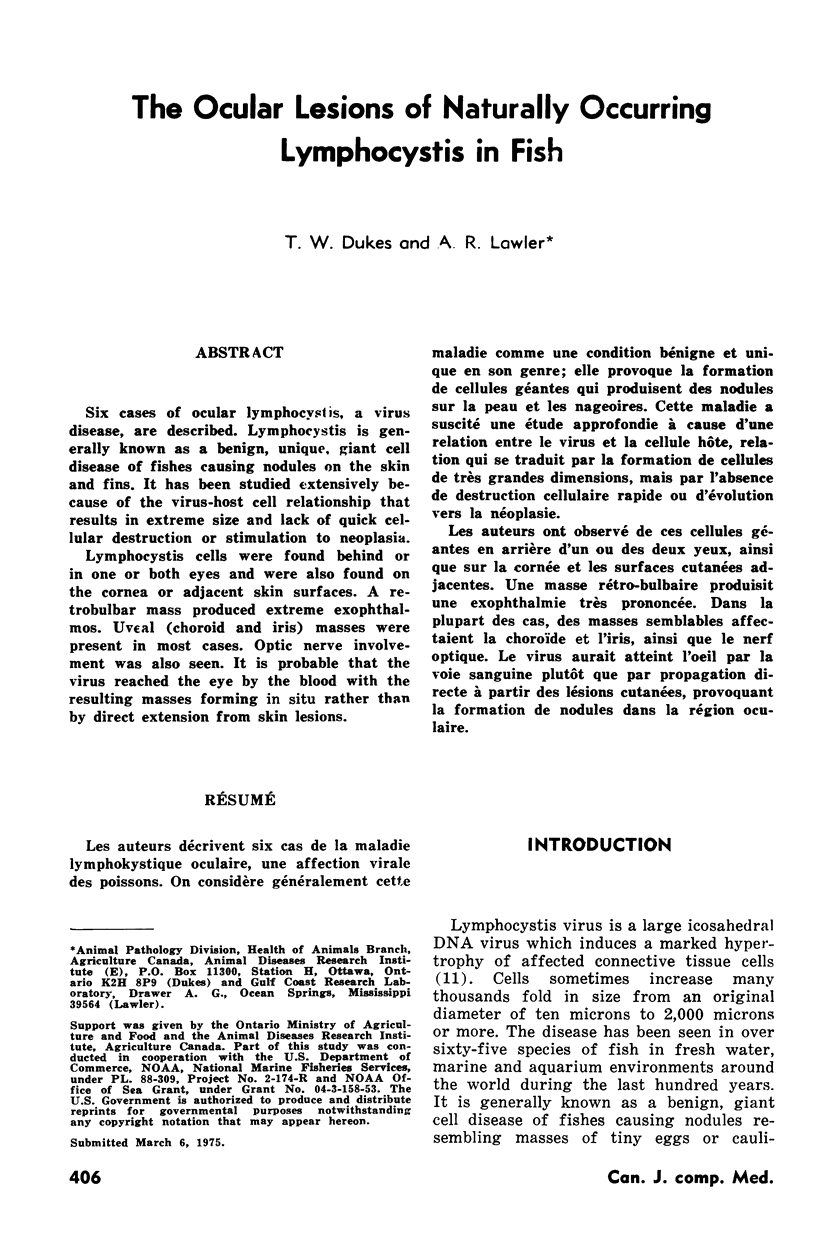
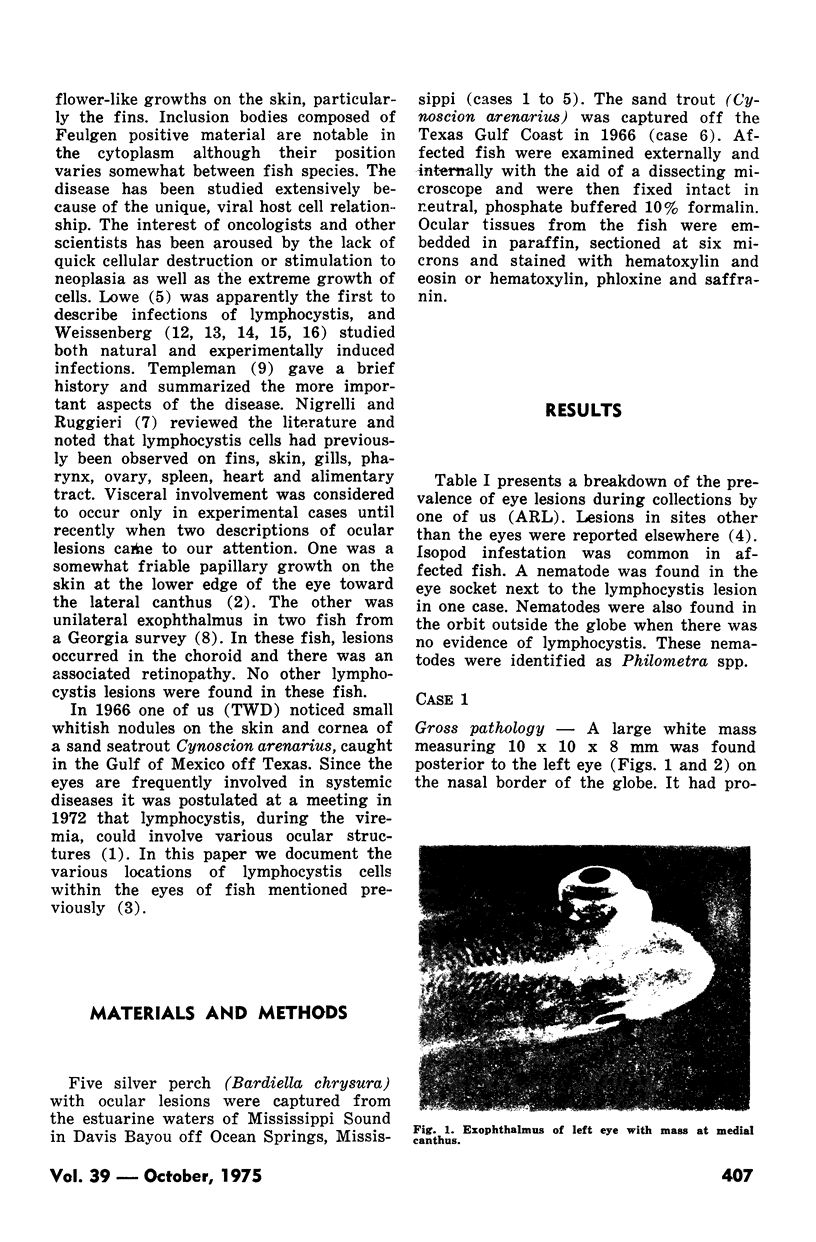
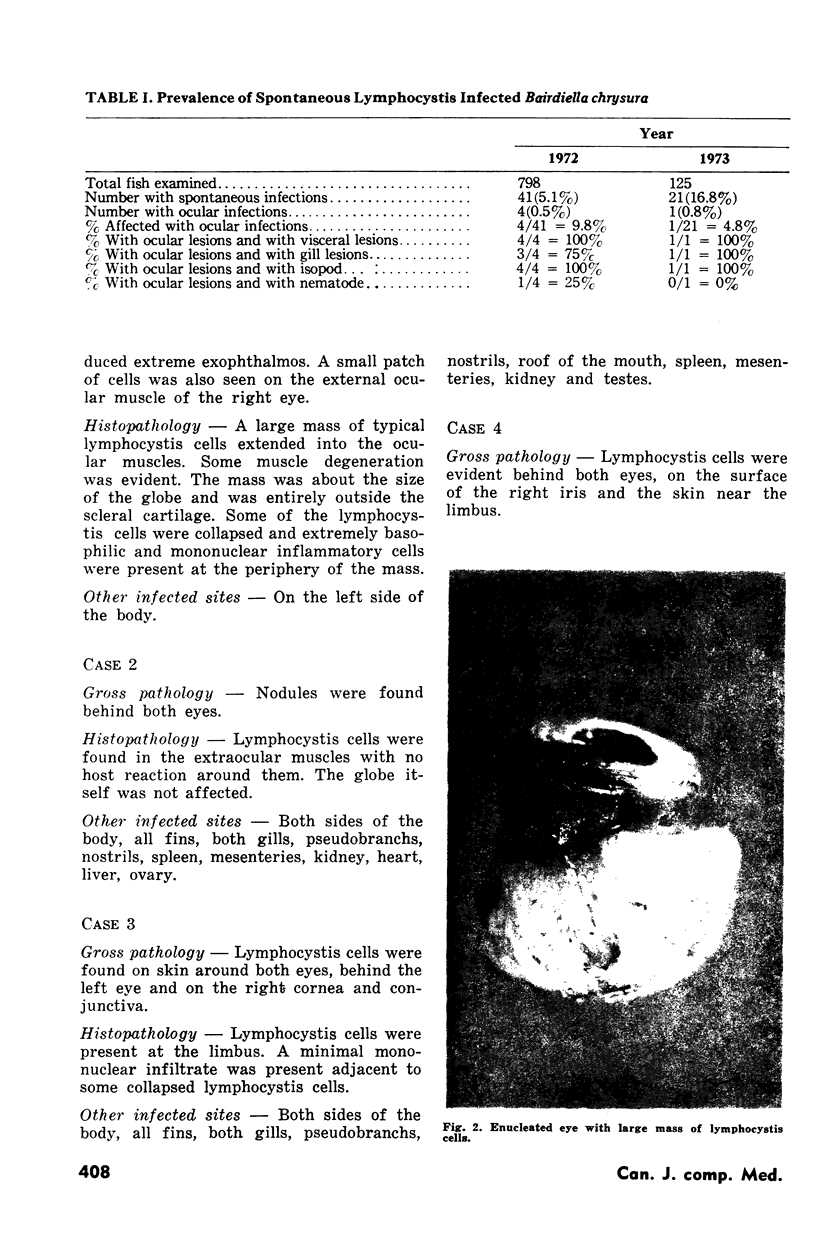
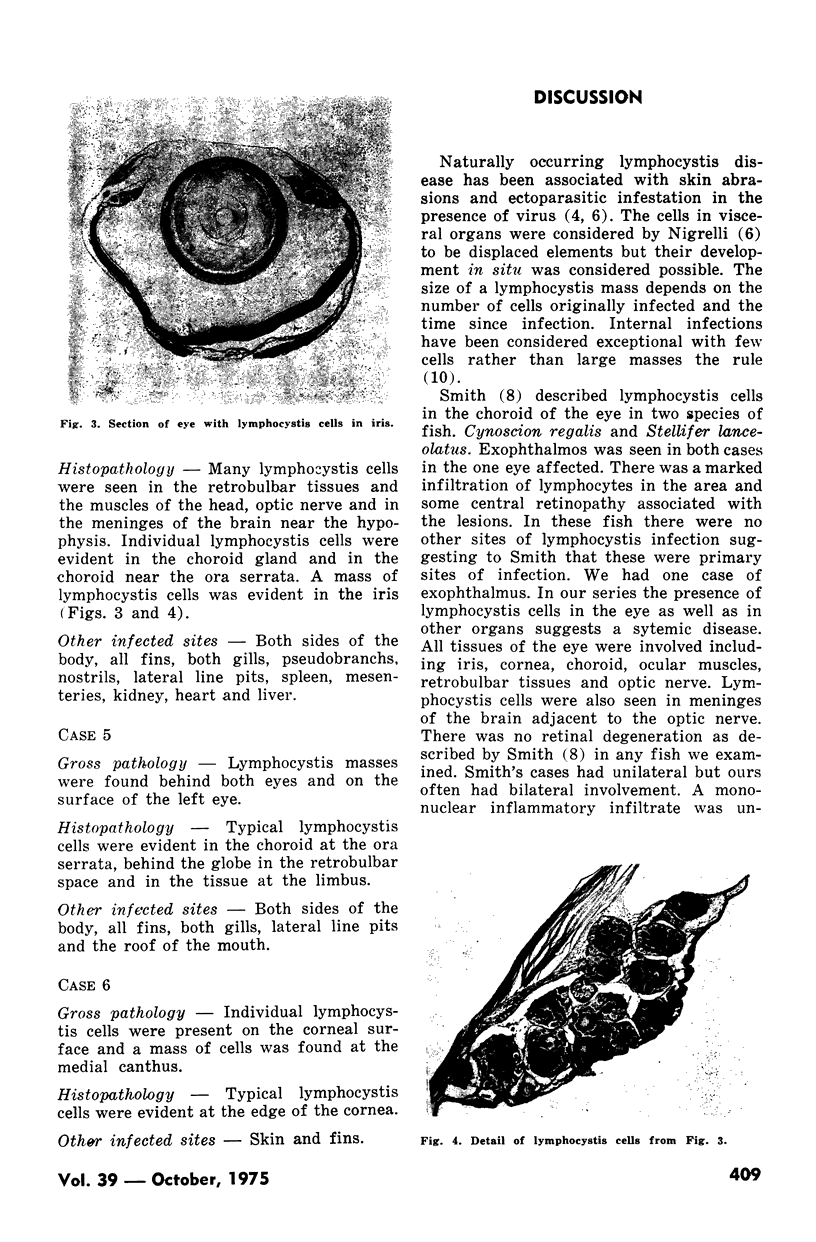
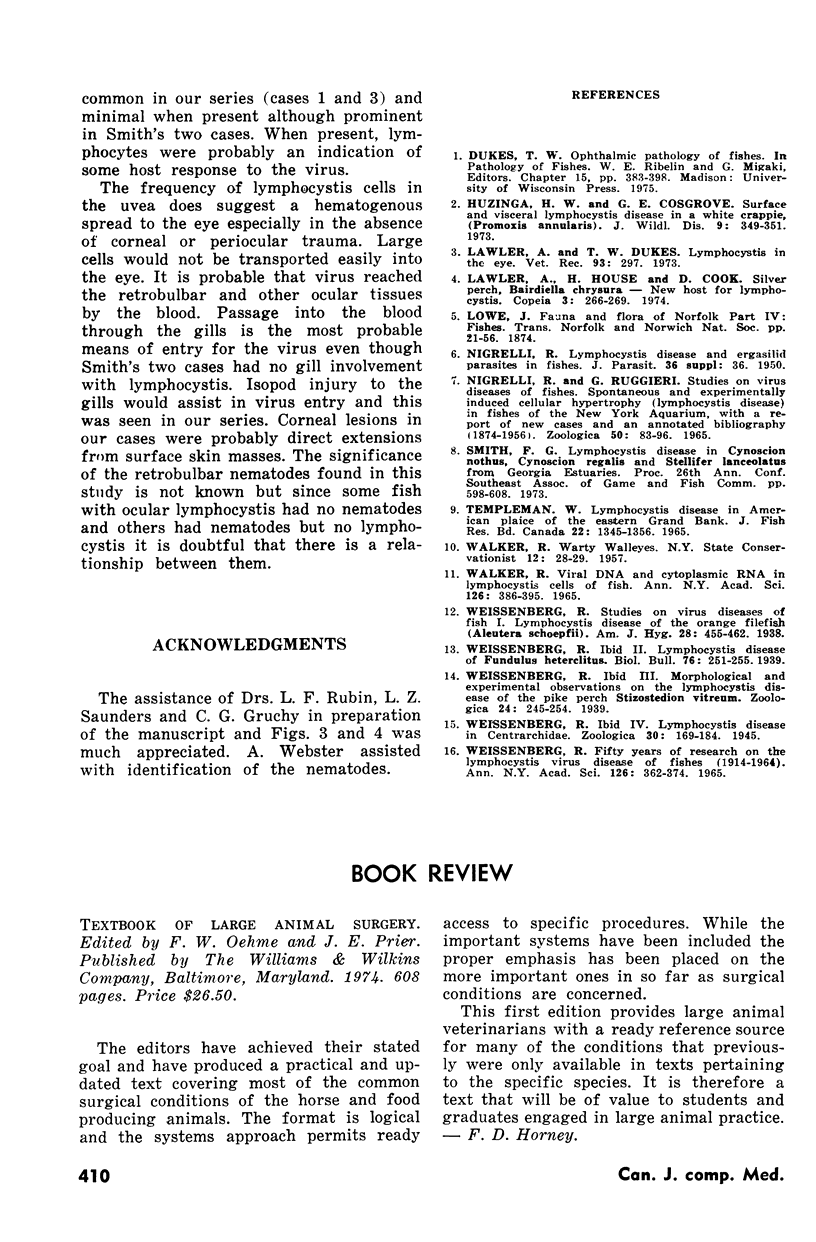
Images in this article
Selected References
These references are in PubMed. This may not be the complete list of references from this article.
- Huizinga H. W., Cosgrove G. E. Surface and visceral lymphocystis disease in a white crappie, Pomoxis annularis. J Wildl Dis. 1973 Oct;9(4):349–351. doi: 10.7589/0090-3558-9.4.349. [DOI] [PubMed] [Google Scholar]
- Lawler A. R., Dukes T. W. Lymphocystis in the eye. Vet Rec. 1973 Sep 8;93(10):297–297. doi: 10.1136/vr.93.10.297-a. [DOI] [PubMed] [Google Scholar]
- Walker R. Viral DNA and cytoplasmic RNA in lymphocystis cells of fish. Ann N Y Acad Sci. 1965 Aug 10;126(1):386–395. doi: 10.1111/j.1749-6632.1965.tb14288.x. [DOI] [PubMed] [Google Scholar]
- Weissenberg R. 50 years of research on the lymphocystis virus disease of fishes (1914-1964). Ann N Y Acad Sci. 1965 Aug 10;126(1):362–374. doi: 10.1111/j.1749-6632.1965.tb14286.x. [DOI] [PubMed] [Google Scholar]




